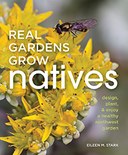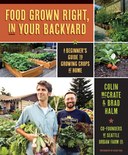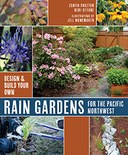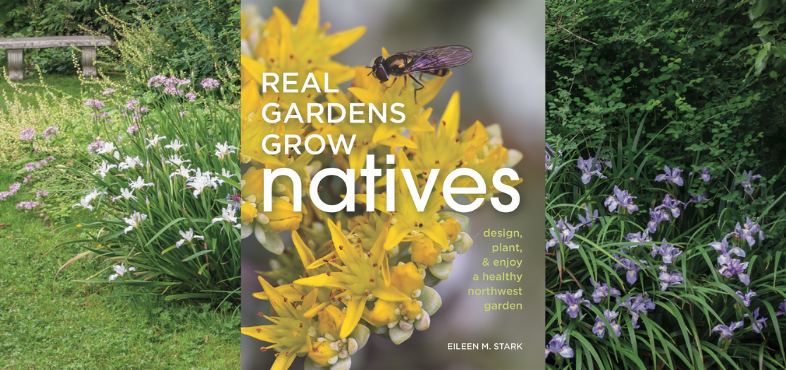
Finding the right plants for your garden can be difficult. Local garden stores sell a large variety of plants, but many of them are not native to the area. This can mean a lot of money is wasted on beautiful plants that can't survive our Pacific Northwest seasons.
To set up your yard for success, use plants native to your area and hardiness zone. Real Gardens Grow Natives: Design, Plant, and Enjoy a Healthy Northwest Garden can help you with that! The book includes:
- Detailed profiles of 100 select native plants for the Pacific Northwest west of the Cascades, plus related species, helping you decide on plant choice and placement
- Straightforward methods to enhance or restore habitat and increase biodiversity
- Landscape design guidance for various-sized yards, including sample plans
- Ways to integrate natives, edibles, and nonnative ornamentals within your garden
- Specific planting procedures and secrets to healthy soil
- Techniques for propagating your own native plants
- Advice for easy maintenance, using organic methods
Check out these five native flowers pulled from Real Gardens Grow Natives and get inspired!
Camassia leichtlinii
Great camas or wild hyacinth
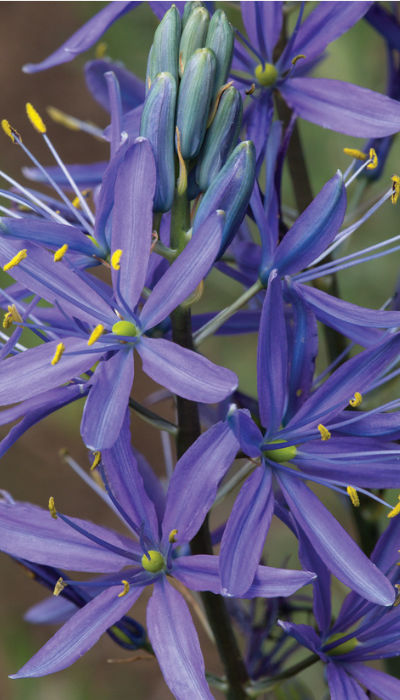
Plant Type: Perennial bulb
Size: 2-3 feet x 1 foot
Light Requirements: Sun
Water Requirements: Low
Hardiness Zones: 7a to 9b
Camas are related to lilies and produce captivating, star-like flowers on tall spikes in midspring that attract pollinators. Leaves are long and linear. Plant bulbs in autumn in a sunny spot where spring bulbs would be welcome, such as beneath deciduous trees that don’t leaf out too early, in rock gardens or meadow gardens, and in perennial borders. May also be grown in pots.
Rosa pisocarpa
Clustered wild rose
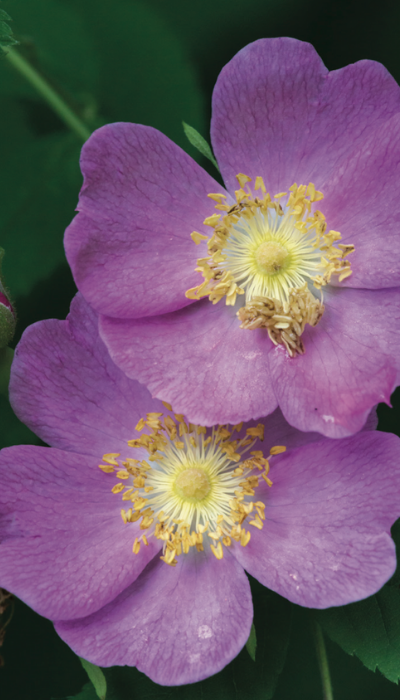 Plant Type: Deciduous shrub
Plant Type: Deciduous shrub
Size: 7 feet x 6 feet
Light Requirements: Full sun to partial shade
Water Requirements: Low to medium
Hardiness Zones: 7b to 9b
Also known as the pea or swamp rose, this is one of 20 rose species native to North America that spread slowly by rhizomes. Arching branches support delicate compound leaves and may have prickles. In late spring to midsummer, flowers bloom at the tips of young stems. As the fruits mature, they turn dark red and stay on the plant during winter and early spring. Grow this at the back of perennial borders, at the edge of woodland settings, or in large rain gardens.
Symphyotrichum subspicatum
Douglas aster
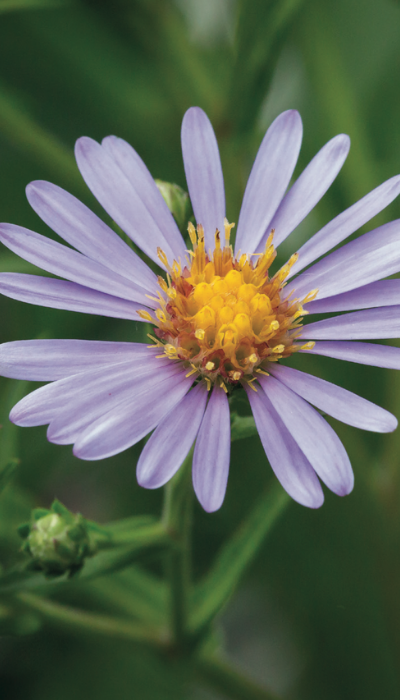 Plant Type: Perennial
Plant Type: Perennial
Size: 3 feet x 3 feet
Light Requirements: Sun to partial shade
Water requirements: Medium
Hardiness Zones: 6a to 9b
In midsummer to midfall, this multi-stemmed perennial is studded with pale lavender-blue, daisy-like flowers. Leaves are narrowly oblong. This pollinator plant looks wonderful growing in drifts with other similarly-sized perennials or shrubs, in moist meadow or wildflower gardens, or toward the back of a low perennial border. Also known as Aster subspicatus.
Dodecatheon hendersonii
Henderson’s shooting star
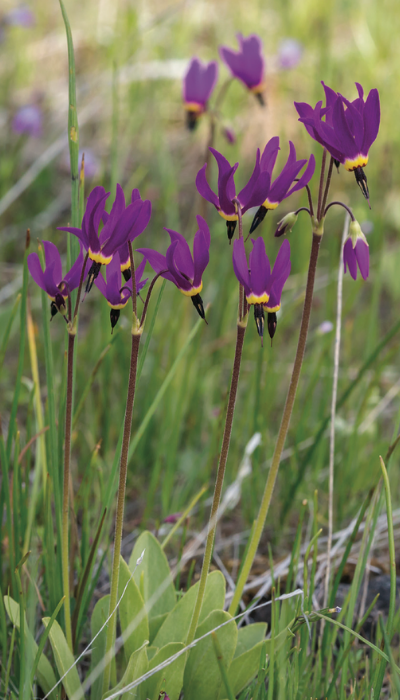 Plant Type: Perennial deciduous bulb
Plant Type: Perennial deciduous bulb
Size: 6-14 inches x 6-8 inches
Light Requirements: Partial shade
Water Requirements: Low
Hardiness Zones: 7a to 9b
This eye-catching little summer-deciduous wildflower will bring you to your knees in early to late spring when its little dartlike flowers put on their show. Leafless stems arise from rosettes of spoon-shaped leaves and present as many as 15 spectacular flowers that gracefully nod with backward-swept petals. Of the several species that occur in our region, this one needs to dry out in summer after it seasonally dies back, so it is perfect for drought-tolerant wildflower or meadow gardens, rock gardens, or other well-drained, partly-shaded sites. Looks best when planted in drifts.
Delphinium trolliifolium
Columbia larkspur
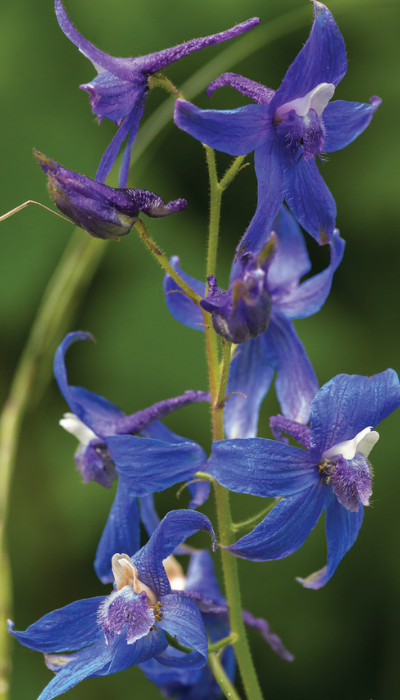 Plant Type: Deciduous perennial
Plant Type: Deciduous perennial
Size: 2-5 feet x 1-2 feet
Light Requirements: Shade to partial shade
Water Requirements: Medium
Hardiness Zones: 6b to 9b
An old-fashioned charmer, this deciduous perennial is upright and has large, deeply dissected leaves. Showy, deep-blue flowers bloom along tall spikes, creating a colorful show in late spring. Perfect in moist, shady, cottage gardens, perennial borders, or woodland gardens, or near ponds or streams. All larkspurs are toxic if ingested.
For more information on these flowers (and a lot more info about gardening with native plants in the Pacific Northwest) get Eileen Stark's book, Real Gardens Grow Natives: Design, Plant, and Enjoy a Healthy Northwest Garden.
 Mountaineers Books
Mountaineers Books
